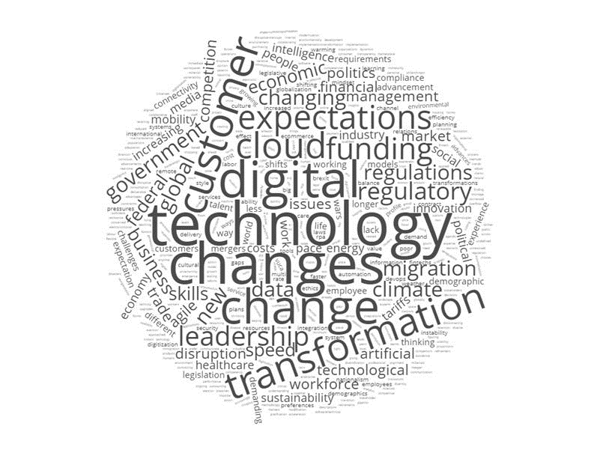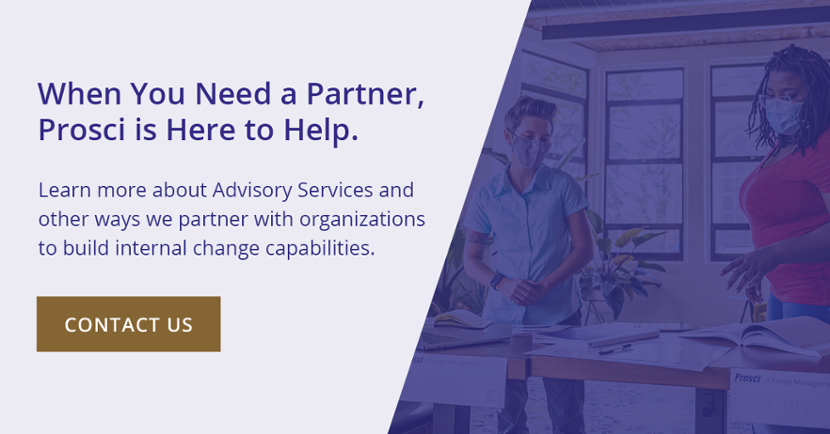How to Recognize Change Fatigue in Your People

2 Mins
Updated: February 23, 2024
Published: June 1, 2022

What happens when too many project changes begin to take a physical and emotional toll on your people? How can you help them when the changes just keep coming? Continuous change is almost expected today, but you don't have to simply accept the negative effects. Here's how to recognize fatigue, assess the impacts, and find solutions.
Change Saturation vs. Change Fatigue
Change saturation occurs in organizations when disruptive changes exceed your capacity to adopt them. Your organization is likely saturated when turmoil becomes the norm, projects can’t be prioritized easily, bottlenecks begin to slow progress, and project outcomes begin to suffer.
When the organization experiences change saturation, employees begin to exhibit signs of change fatigue on both personal and professional levels. It’s easy to see why. In recent years, people have been asked to adopt changes associated with remote work, new business models, new technologies, organizational restructuring, political and regulatory changes, culture initiatives, ongoing digitalization, and more. On top of that, virtual engagements and workplaces are creating an always-on mentality that can wear people down.
Changes Pressuring Your Mission and Strategy Today

Balancing a portfolio of strategic changes is easier with an experienced partner.
The Prosci Advisory team can help. 
Roles most affected by change
Although everyone feels the impacts of change, Prosci Best Practices in Change Management benchmarking research shows that individuals in certain functional areas experience more change saturation than others. For example, roles in operations, customer service, sales, human resources and, of course, the change management office see more than their fair share of change initiatives.
Of these roles, people managers and front-line employees experience the greatest levels of change saturation. People managers often implement changes and tend to feel the impacts first. And because changes cascade through organizations from the top down, front-line employees tend to bear the cumulative effects of ongoing change more than any other role.
Symptoms and signs of change fatigue
How will you know when your people are fatigued? The ADKAR Model shows us that individuals react to change in predictable ways, including how they exhibit fatigue from change saturation.
Here’s what to look for:
- Noise – More frequent and louder complaints about changes
- Apathy – Growing indifference about project changes, with some completely disengaging; employees stop asking questions
- Burnout – Employees are visibly tired
- Stress – People seem anxious about changes
- Resistance – Some push back on change with more energy while others don't resist at all
- Negativity – Cynicism prevails
- Skepticism – Individuals express doubt about change success
When people show these symptoms and signs, organizations also suffer consequences. For example, change-fatigued employees tend to produce less, take more time off, and even quit their jobs more frequently. Morale begins to erode across the organization, and employees lose their focus on business basics.

Addressing change fatigue in individuals
Actively working to avoid change saturation from projects in your organization is ideal. But when you can’t avoid it, catching fatigue early enables you to offer relief and avoid the long-term negative impacts on individuals, projects and organizations.
No matter which approach you choose, being proactive is the key:
- Gather feedback directly from employees and people managers on how they are perceiving change and the level they perceive.
- Conduct satisfaction surveys, interviews and small-group sessions to ask individuals about the amount of change they’re experiencing and how they’re reacting to it.
- Actively manage project resource allocation and scheduling, and use mapping tools and enterprise management tools to gauge employee fatigue.
- Use assessments to measure the amount of change and its impact on individuals and groups.
- Evaluate the type and number of change efforts underway to understand potential impacts on individuals. Teams can also include this information in regular reporting.
- Assess the time available to handle change at the employee level.
- Measure success rates of change efforts over time, considering the amount of change happening in the organization.
- Conduct comparative observations to evaluate the amount of change taking place and the level of discontent people are exhibiting in different parts of the organization.
Mitigate Change Saturation and Fatigue
Given the pressures on organizations today, change saturation and fatigue may seem inevitable, but developing the right capabilities can help you head off problems before they start. By applying change management best practices, portfolio management, coaching and training, you and your organization can help people thrive through change.


